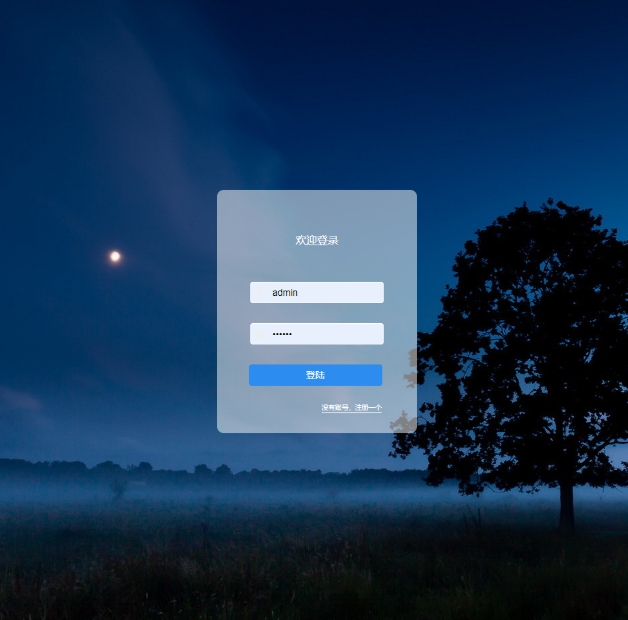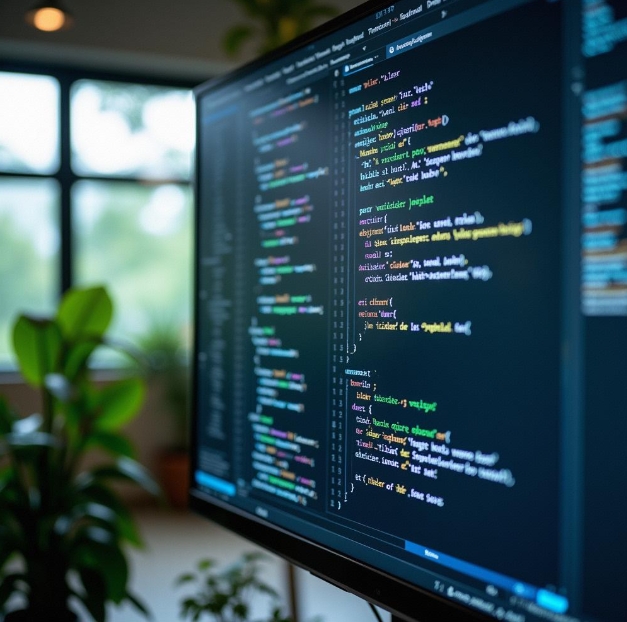Building Efficient and Secure DApps: A Complete Guide to Ethereum Application Development
- latest articles
- 1.DApp Development & Customization: Merging Diverse Market Needs with User Experience 2.Analysis of the Core Technical System in DApp Project Development 3.How to achieve cross-chain interoperability in Web3 projects? 4.How does the tokenization of points reconstruct the e-commerce ecosystem? 5.How to Set and Track Data Metrics for a Points Mall? 6.What is DApp Development? Core Concepts and Technical Analysis 7.Inventory of commonly used Web3 development tools and usage tips 8.Development of a Distribution System Integrated with Social E-commerce 9.Six Key Steps for Businesses to Build a Points Mall System 10.What is DApp Development? A Comprehensive Guide from Concept to Implementation
- Popular Articles
- 1.Future Trends and Technology Predictions for APP Development in 2025 2.Analysis of the DeFi Ecosystem: How Developers Can Participate in Decentralized Finance Innovation 3.From Zero to One: How PI Mall Revolutionizes the Traditional E-commerce Model 4.DAPP Development | Best Practices for Professional Customization and Rapid Launch 5.Recommended by the Web3 developer community: the most noteworthy forums and resources 6.From Cloud Computing to Computing Power Leasing: Building a Flexible and Scalable Computing Resource Platform 7.How to Develop a Successful Douyin Mini Program: Technical Architecture and Best Practices 8.Shared Bike System APP: The Convenient Choice in the Era of Smart Travel 9.How to Create a Successful Dating App: From Needs Analysis to User Experience Design 10.From Design to Development: The Complete Process of Bringing an APP Idea to Life
With the rapid development of blockchain technology, decentralized applications (DApps) have become a key force driving the application of blockchain technology. Among the many blockchain platforms, Ethereum is undoubtedly one of the most influential. It not only supports smart contracts but also provides developers with powerful development tools, making the construction of DApps more efficient and flexible. However, to develop a DApp that is both efficient and secure, developers need to consider multiple factors comprehensively, from requirements analysis and smart contract design to front-end development, and later deployment and maintenance, all of which require careful design and practice.
This article will detail how to build an efficient and secure DApp on the Ethereum platform, covering the key steps and best practices throughout the development process.
I. Understanding the Core Components of a DApp
DApp is an abbreviation for decentralized application. Its biggest difference from traditional applications lies in its reliance on the blockchain for data storage and logic execution. Typically, a DApp consists of three key parts:
Smart Contracts: Smart contracts are the core logic of a DApp. All transactions, data storage, and rule execution are handled by smart contracts. Smart contracts run on the blockchain, ensuring that the code executes automatically according to predefined conditions.
Front-End Interface: Similar to traditional web applications, the front-end interface of a DApp is where users interact with the application. The front end typically uses technologies like HTML, CSS, and JavaScript, primarily responsible for displaying data and capturing user input.
Wallet Integration: DApps need to interact with users' digital wallets (such as MetaMask) to ensure user authentication and transaction signing. The wallet serves as the bridge between the DApp and the Ethereum blockchain, allowing users to submit transactions or interact with smart contracts.
Through these three components, DApps can achieve decentralization, ensuring transparency, reliability, and security of the application.

II. Requirements Analysis and Smart Contract Design
1. Defining Requirements
The first step in building a DApp is to clearly define its functional requirements. For example, suppose we are building a decentralized voting system. Our basic requirements might include:
Users can initiate a vote and specify voting options.
Participating users can select a candidate to vote for.
Voting results are publicly transparent and tamper-proof.
Voting is only allowed within a specific time frame.
These requirements provide the foundation for subsequent smart contract design. Developers must precisely define the contract's functional modules based on the requirements.
2. Smart Contract Design
Smart contract design requires careful planning, especially in data storage and business logic implementation. It must ensure that the application's business rules are correctly executed and possess sufficient security to avoid vulnerabilities.
In a voting system, the smart contract might need to implement the following functions:
Vote Initiation: Only the contract owner (e.g., an administrator) can initiate a vote and specify voting options.
Vote Participation: Users can vote for a candidate within the specified time frame, with each user allowed to vote only once.
Result Query: Users can view the voting results at any time, and the system should update and display the latest data in real-time.
When designing smart contracts, besides functional requirements, security is a crucial aspect that cannot be overlooked. Once a smart contract is deployed on the blockchain, it cannot be modified. Therefore, the development process must ensure the robustness and vulnerability-free nature of the logic.
III. Front-End Development and Interaction with the Blockchain
1. Developing the Front-End Interface
The front-end part of a DApp is primarily responsible for interacting with users. In traditional web development, the front-end interface is typically implemented using HTML, CSS, and JavaScript. For DApps, the front end not only needs to display data but also interact with smart contracts.
During development, front-end developers often use JavaScript libraries (such as Web3.js or Ethers.js) to facilitate communication with the Ethereum blockchain. These libraries provide a series of convenient functions that enable the front end to interact with smart contracts on the blockchain, such as calling functions in the contract, retrieving blockchain data, or submitting transactions.
Front-end interface development typically requires attention to user experience design, ensuring the interface is simple and intuitive. For DApps, it is crucial that users can easily view voting options, voting progress, and real-time results.
2. Integrating Digital Wallets
Interaction between a DApp and the Ethereum blockchain requires support from users' digital wallets. Users can connect to the DApp through browser extensions (like MetaMask) and sign transactions within the wallet. The wallet not only helps verify the user's identity but also handles transaction sending and signing.
In front-end implementation, developers need to use the interfaces provided by the wallet to check user account information, request authorization, and send transactions. Security is particularly important at this stage. Developers must ensure that the transaction signing process is not maliciously tampered with and avoid exposing users' private keys as much as possible.

IV. Deployment and Maintenance
1. Deploying Smart Contracts
After completing the smart contract code and conducting thorough testing, the next step is to deploy the contract to the Ethereum network. Deploying a smart contract requires Gas fees, which vary depending on network congestion.
Developers can choose to deploy the contract to different networks (such as the Ethereum mainnet, testnets, or Layer 2 networks). Testnets are essential tools during development, helping developers verify contract functionality without consuming real ETH.
2. Deploying the Front-End Application
The front-end application can be deployed on traditional web servers or using decentralized storage methods like IPFS (InterPlanetary File System). Using IPFS not only enhances the decentralization of the application but also reduces server dependency, improving the application's censorship resistance and reliability.
3. Monitoring and Maintenance
DApp maintenance typically involves two main parts: monitoring smart contracts and updating the front end. Once a smart contract is deployed on the blockchain, it cannot be modified. Therefore, developers must conduct rigorous testing and auditing before deployment.
Additionally, after the DApp goes live, developers should continuously monitor the application's performance and user feedback. For example, checking for abnormal transactions in smart contracts, bugs in the front-end application, or new security vulnerabilities that need patching. Timely updates and fixes can effectively ensure the long-term stable operation of the DApp.
V. DApp Security Best Practices
The security of a DApp is crucial for protecting user assets and ensuring the platform operates normally. During development, developers should follow the following best practices to enhance DApp security:
Avoid Reentrancy Attacks: Reentrancy attacks are common security vulnerabilities in smart contracts, especially when a contract calls an external contract. Developers should take preventive measures to avoid malicious reentrancy by external contracts.
Use Open-Source, Secure Smart Contract Libraries: For example, libraries like OpenZeppelin provide smart contract libraries that have been extensively tested, reducing the occurrence of common vulnerabilities.
Set Permissions Appropriately: Smart contracts should strictly enforce permission controls, ensuring that sensitive operations can only be performed by the contract owner or specific roles to prevent permission abuse or attacks.
Prevent Integer Overflow: When performing mathematical operations in contracts, integer overflow issues should be avoided. Developers can use specialized libraries to handle large number operations and security verification.
Conduct Thorough Code Audits: Before releasing a smart contract, developers should perform comprehensive code audits to ensure there are no vulnerabilities or potential risks. Additionally, audit reports from third-party security teams are very important.
VI. Conclusion
Building an efficient and secure DApp is not a simple task. It requires developers to have a deep understanding of blockchain technology, smart contract security, and the interaction between the front end and the blockchain. From requirements analysis and smart contract design to front-end development and application deployment, each step demands careful design and implementation.
As technology advances, DApp development will become more convenient, but security will always remain a core concern for developers. By following best practices and conducting rigorous testing and audits, risks can be minimized, ensuring the stability of the DApp and the safety of users' funds.
Building an efficient and secure DApp is not only a technical challenge but also a test of the developer's sense of responsibility.
-

How to achieve cross-chain interoperability in Web3 projects?
With the continuous development of WEB3 technology, Web3 has gradually become an···
-

Inventory of commonly used Web3 development tools and usage tips
With the continuous development of blockchain technology, Web3 has become a hot ···
-

Web3 development trend prediction: analysis of future technology directions and application scenarios
With the gradual development of blockchain technology, the concept of Web3 has m···

 Blockchain
Blockchain










